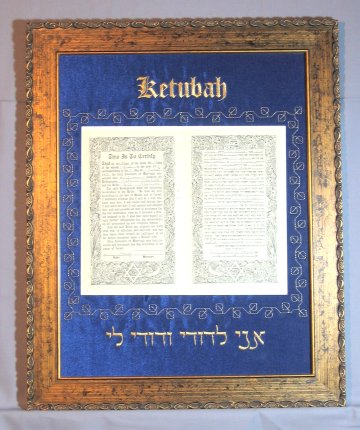What is the New York style of Ketubot?
It is similar but different to the Buenos Aires style.
The New York Ketubah tends to be more Jewish; the Buenos Aires Ketubah tends to be more modern, more contemporary.
The New York Ketubah tends to be more ornate; the Buenos Aires Ketubah tends to be more to-the-point.
The New York Ketubah tends to be more classically-designed (in the usual Ketubah styles); the Buenos Aires Ketubah tends to be a bit more cutting-edge and modern.
But what about the Israeli Ketubah?
The Israeli Ketubah tends to have more ancient Judaic themes: the use of desert colors, the Biblical imagery.
What kind of Ketubah do you like? What kind of Ketubah do you want?
Let us know!






